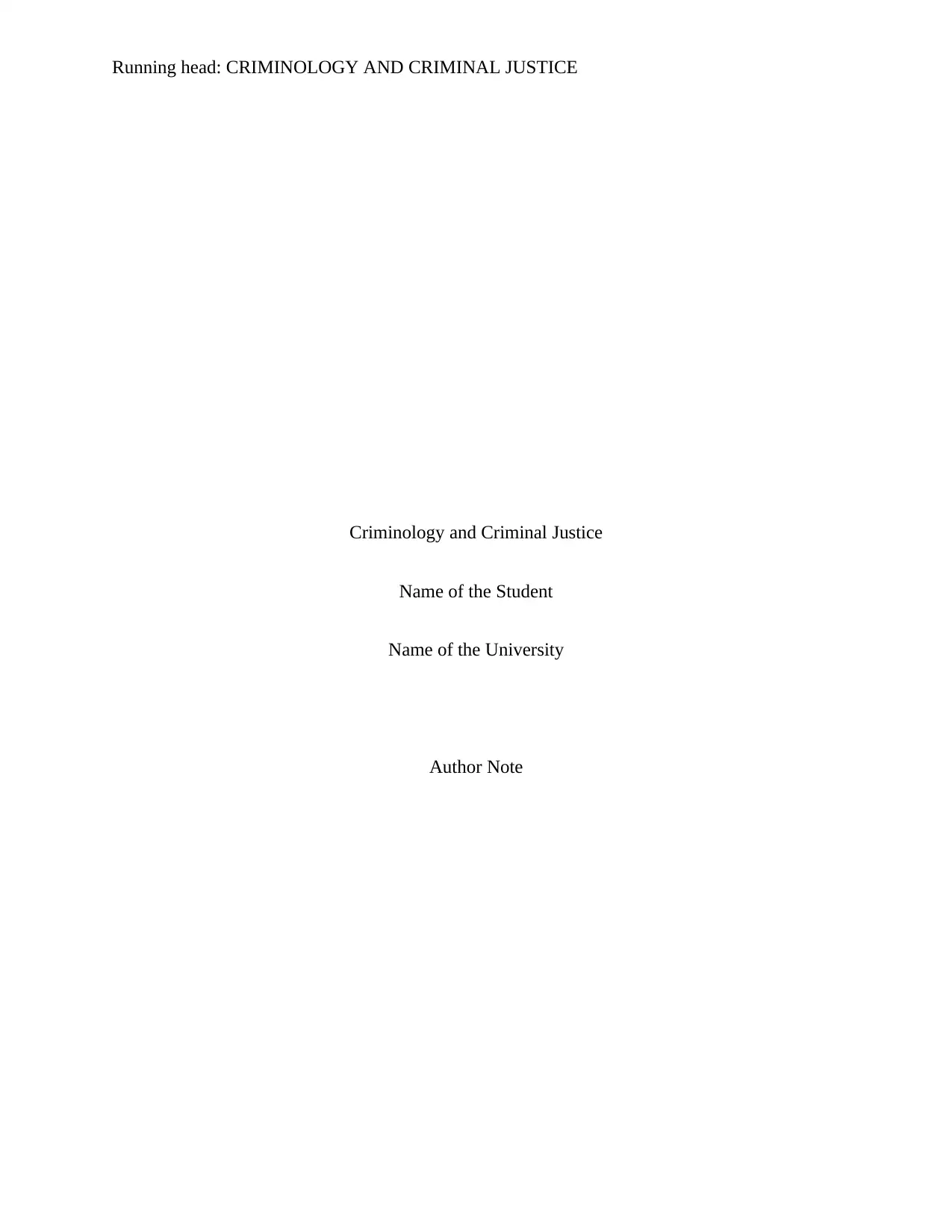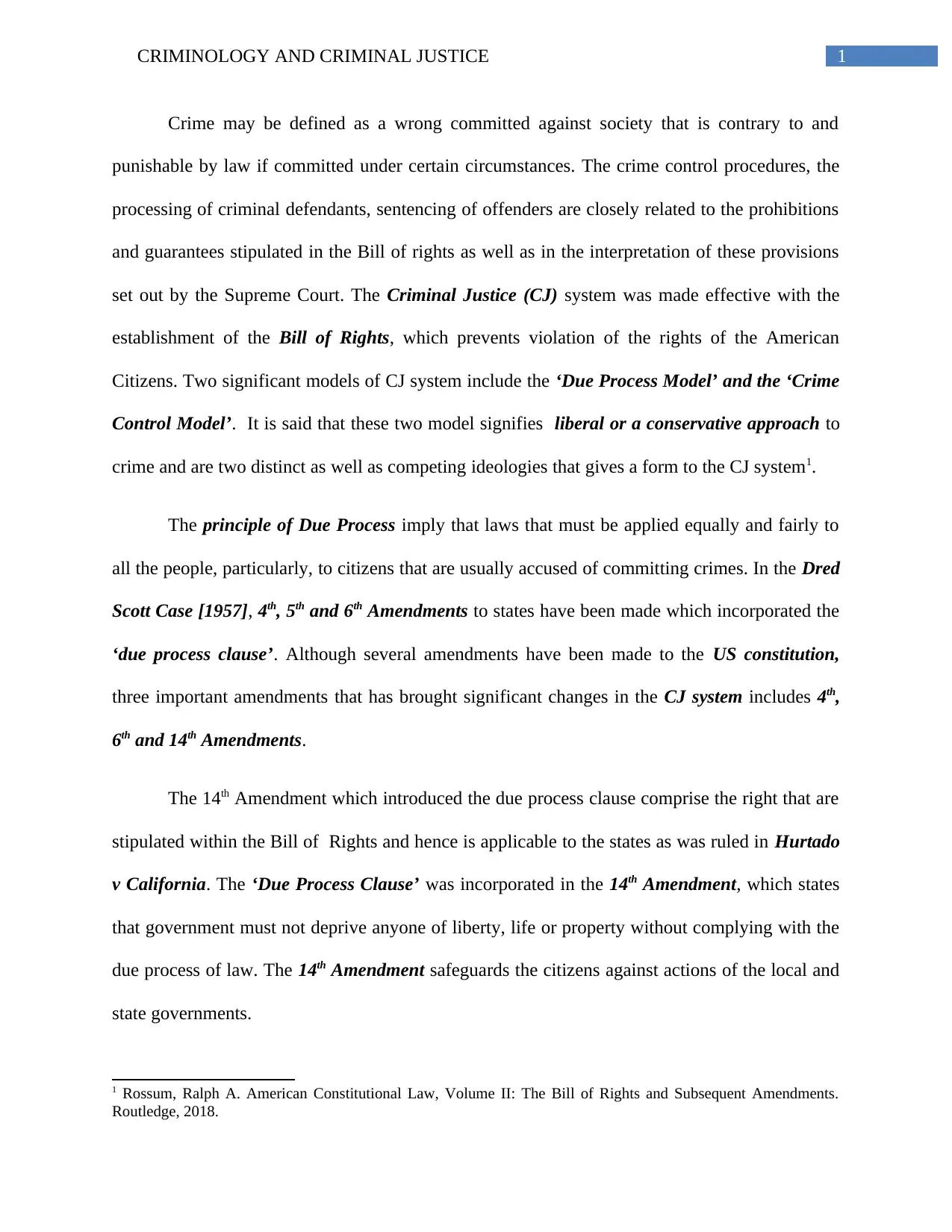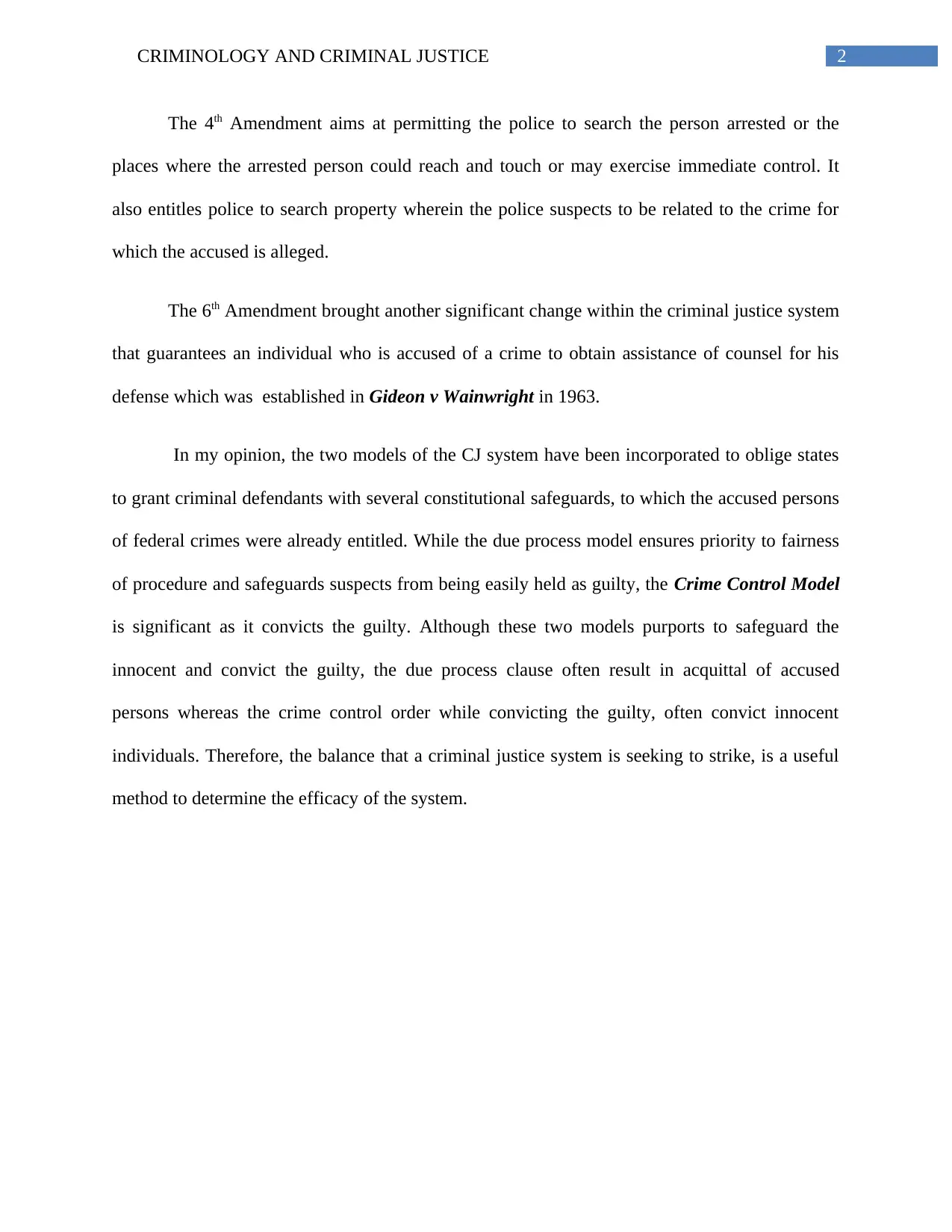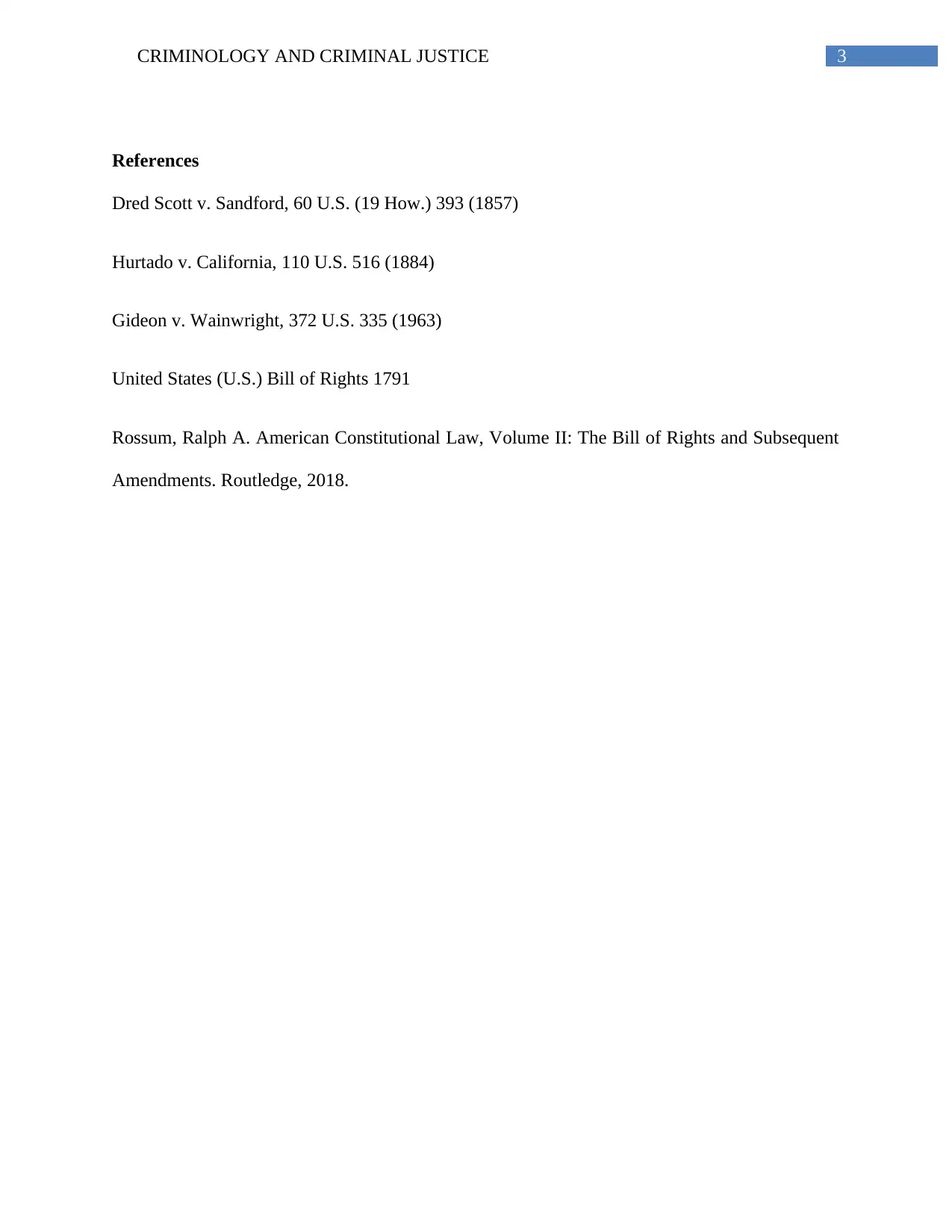Criminology and Criminal Justice: Amendments, Models, and Due Process
VerifiedAdded on 2023/06/11
|4
|691
|287
Essay
AI Summary
This essay provides an overview of criminology and the criminal justice system in the United States, emphasizing the significance of the Bill of Rights and its impact on crime control procedures. It discusses the Due Process Model and the Crime Control Model, highlighting their contrasting approaches to justice. The essay examines the 4th, 6th, and 14th Amendments, focusing on their role in safeguarding individual rights and ensuring fair legal processes. It also analyzes landmark cases like Dred Scott, Hurtado v California and Gideon v Wainwright that shaped the interpretation and application of these amendments. The essay concludes by considering the balance between protecting the innocent and convicting the guilty, assessing the effectiveness of the criminal justice system in achieving this balance. Desklib offers a wide array of solved assignments and past papers for students.
1 out of 4











![[object Object]](/_next/static/media/star-bottom.7253800d.svg)